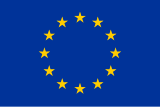Vatican City and the European Union

|

|
|

|
||
|
|
||
The Vatican City State and the European Union maintain special relationships, some of which are shaped by bilateral agreements between the city-state and the EU member state Italy . But the Vatican is not a member of the European Union . There are also no direct diplomatic relations; these are handled by the Holy See .
The Vatican has open borders with Italy and plans to join the Schengen Agreement . As an associated state, the euro is used as the currency and its own coins are minted.
History of relations between the EU and Vatican City
The first apostolic nuncio was accredited as a representative of the Holy See to the then European Economic Community in 1970 . Since 2006 the head of the EU delegation to the United Nations in Rome has also been accredited to the Holy See. Relationships are problem-free.
Schengen
The Vatican City State has open borders with Italy . Its national territory of just 0.44 km² is completely surrounded by the capital Rome . Schengen visas are recognized for entry into the Vatican City State. However, it is not subject to the rules of the Schengen Agreement . However, the Vatican does not rule out an association in the medium term.
duties
The Vatican City State does not belong to the EU internal market or the EU customs area . The customs regulations between the State of Vatican City and the EU go back to an agreement with the Kingdom of Italy from 1930, which was concluded shortly after the Lateran Treaty came into force . Thereafter, the Vatican City is exempt from all duties and taxes in mutual trade. The goods manufactured in the Vatican and exported to Italy are exempt from customs duties and benefit from a preferential trading system.
Euro
Until the introduction of the euro in Italy, the Italian lira, along with the Vatican and San Marino, was the official currency in Vatican City. With a view to the introduction of the euro (2002), the EU finance ministers gave Italy their approval to negotiate a currency agreement with the Vatican City State, which was signed in 2000.
The currency agreement allows the Vatican City State to put Vatican euro coins into circulation, which are recognized as valid currency in the entire euro area. It provides for the right of the State of Vatican City to put euro coins up to an amount of 670,000 euros into circulation annually from January 1, 2002. They are added to Italy's share of the euro coins in circulation. In times of the Sedis vacancy , the State of Vatican City is permitted to put additional coins with a face value of 201,000 euros annually on the market. The same applies to the years in which an Ecumenical Council takes place or it is a Holy Year of the Catholic Church .
On January 1, 2010, a new currency agreement between the EU and the Vatican City State came into force. It provides for an increase in the maximum nominal value to one million euros per year.
The Vatican City State still retains the right to mint collector coins. However, these are not a means of payment in the euro area.
outlook
The question of a Vatican application for membership of the European Union does not arise. The state is deliberately not a member of most international organizations. He is represented internationally by the Holy See , which has observer status in various international organizations , including the Council of Europe . The Vatican City State would also not meet the political conditions for admission to the EU, the so-called Copenhagen criteria . They presuppose a democratic order of the state. The State of Vatican City, on the other hand, is an absolute monarchy without direct democratic rights of participation of its citizens.
Web links
- EAD: Holy See (Vatican)
- Agreement between the Vatican City State and the European Union
- Official website of the State of the Vatican City
Individual evidence
- ↑ “Vatican seeks to join Schengen borderless zone” , EUobserver , January 13, 2006.
- ^ Monetary agreement between the Italian Republic, on behalf of the European Community, and the Vatican City State and, on its behalf, the Holy See Summary of Treaty , on ec.europa.eu
